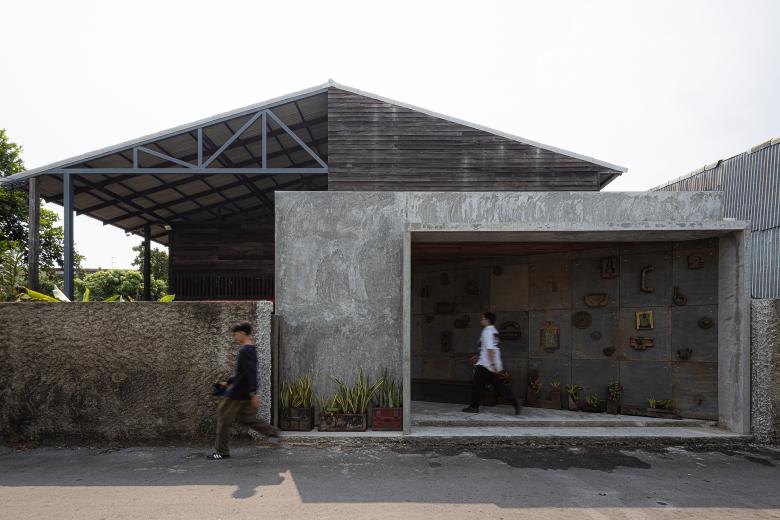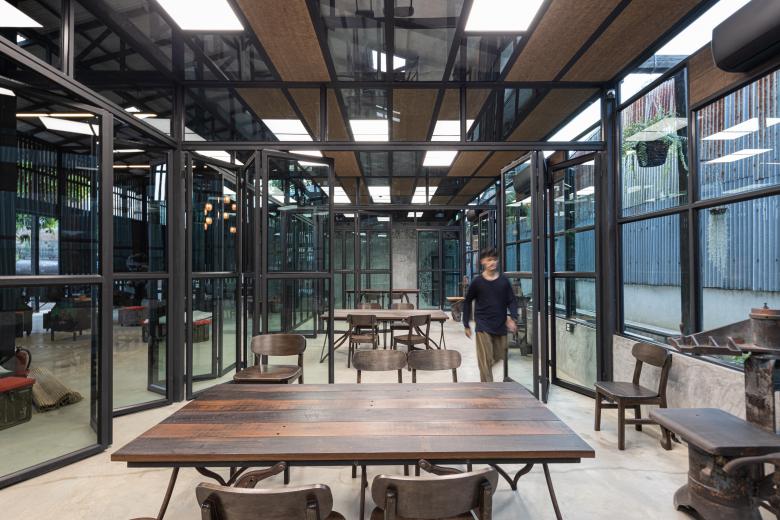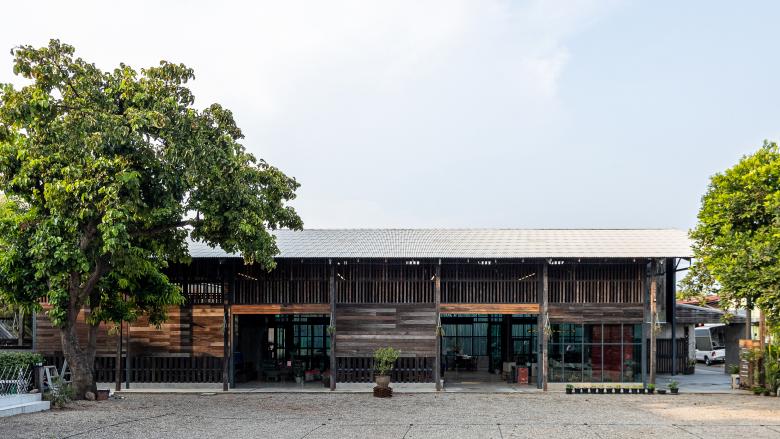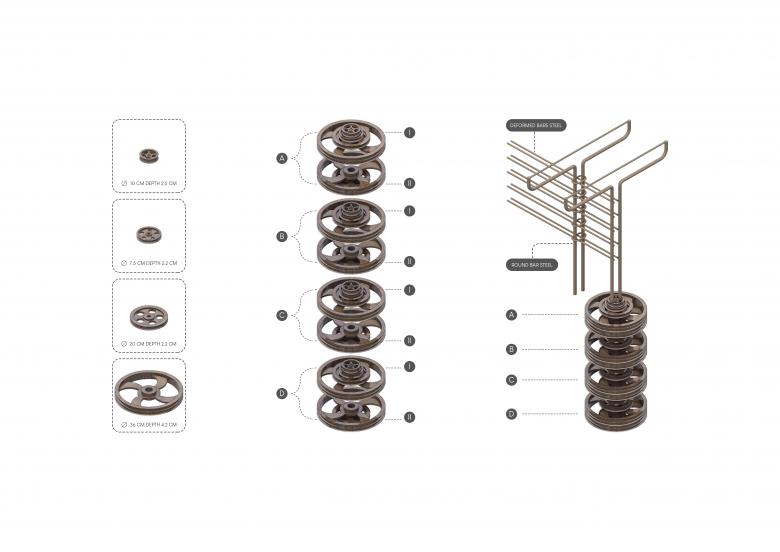World Building of the Week
WENG’s Factory / Co-Working Space
Architect Nonsense
22. aprile 2024
Photo: Kunakorn Teeratititham
Architect Nonsense is a young studio in Bangkok whose second project involved the transformation of an old lathe warehouse and factory into a co-working space with coffee shop. The adaptive reuse project became a playground for experimenting with old metal pieces, apparent even from the street. Architect Nonsense answered a few questions about WENG’s Factory Co-Working Space.
What were the circumstances of receiving this commission?This project originated from our initial proposal to the client. The client found our ideas to be clear and aligned with their needs, which led to the commission.
Photo: Kunakorn Teeratititham
What makes this project unique?WENG's Factory was a wooden lathe factory that had been in operation for generations, from his father to the current owner. The structure, however, was deteriorating with time, and its purposes have evolved in accordance with the changing way of life. The factory has now been turned into a co-working space, complete with a coffee shop, meeting areas, and timber workshops while retaining the original architectural sense of being a father's wooden lathe soul.
Photo: Kunakorn Teeratititham
What is the inspiration behind the design of the building?The owner expressed his intention of turning this factory into a local community space. Still, it needed renovation, including building modifications to solve water leakage, stagnant water, and decaying structures. We has presented refurbishment design concepts and modification plans to revive this factory and tell its new story.
Photo: Kunakorn Teeratititham
How did the site impact the design?The project is surrounded by small factories, which gives the wooden factory the atmosphere of a traditional woodworking establishment. The site is also located near Bang Pratoon Canal, which was once an important waterway. The project owner plans to create an access road through the canal in collaboration with the local community to revitalize it.
Photo: Kunakorn Teeratititham
To what extent did the owner, client, or future users of the building affect the design?The client played a significant role in the design process. They were open to our initial ideas, which aligned with their vision for the project. The project became a playground for experimenting with old metal pieces, reassembling them, and incorporating them into the design. The most striking feature is the wall decoration made of the client's father's old metalwork, which the client arranged and modeled themselves. The client also created the plant pots and, being an environmental engineer, provided valuable insights and suggestions on ventilation and material selection, contributing significantly to the project.
Photo: Kunakorn Teeratititham
Were there any significant changes from initial design to completion?During the finalization of the architectural design, before the commencement of construction, we proposed the inclusion of a spiral staircase and a long walkway connecting the mezzanine level. This was intended to create new perspectives, allowing visitors to experience the wooden warehouse from different angles and providing them with a view of the building's structure from every corner. However, due to budget constraints, this idea was deferred for implementation in a future phase of construction.
Photo: Kunakorn Teeratititham
How does the building relate to other projects in your office?To be honest, this project was our office's second project as an architect. The relatively long construction and design period allowed us to gain valuable experience and learn about the process and methods for improving building functionality. This knowledge has been beneficial for many of our subsequent projects of this nature. We were able to incorporate elements from the original project into the design, creating a link between the past and the present.
Email interview conducted by John Hill.
Photo: Kunakorn Teeratititham
Photo: Kunakorn Teeratititham
Photos: Kunakorn Teeratititham
Photos: Kunakorn Teeratititham
Location: Ekkachai Road, Chomthong, Bangkok
Client: Piyawat Jirateanthum
Architect: Architect Nonsense, Bangkok
- Project Architect: Polpipat Naksawat
- Project Manager: Teerakan Wattanayon
- Project Team: Ratasakon Chantaluxsul
Construction Manager: Pongsakron Phattranurakyotin
Site Area: 2,500 m2
Building Area: 750 m2















